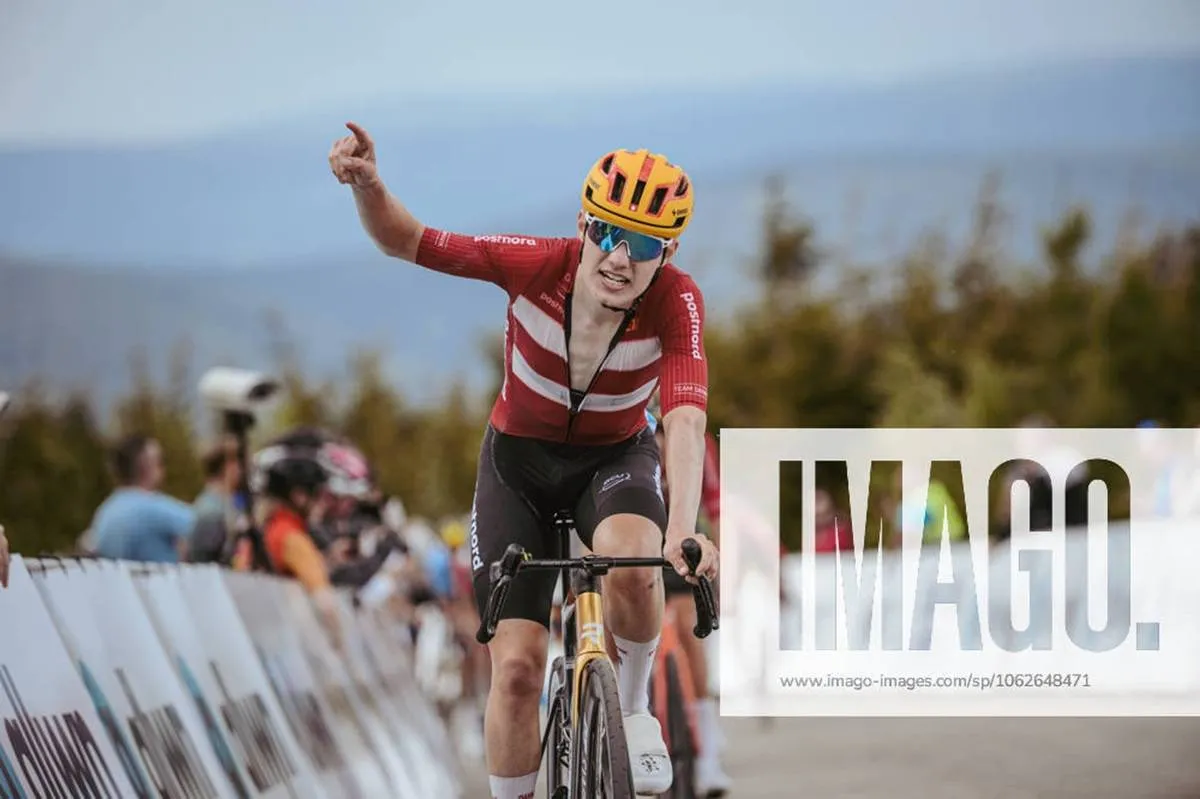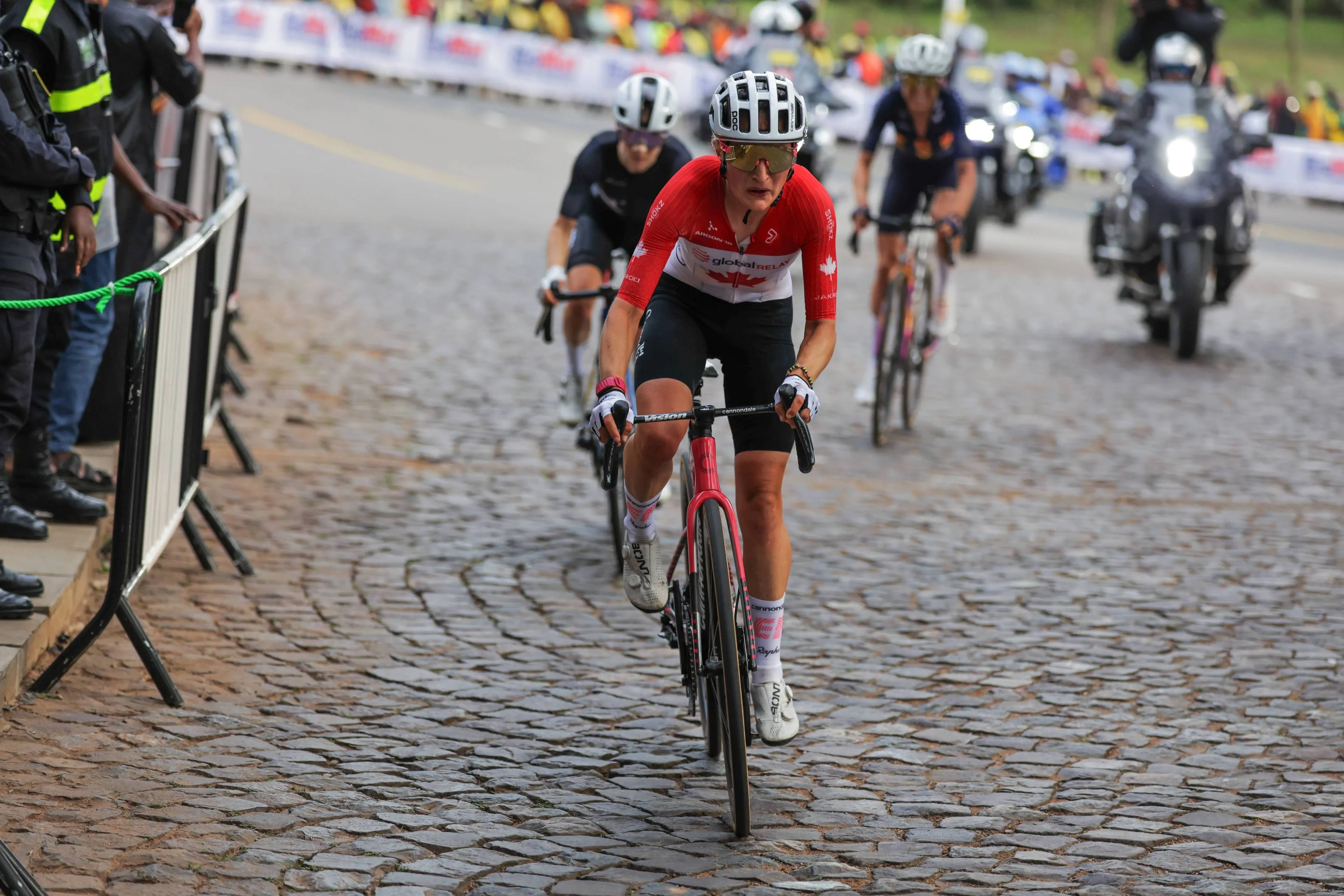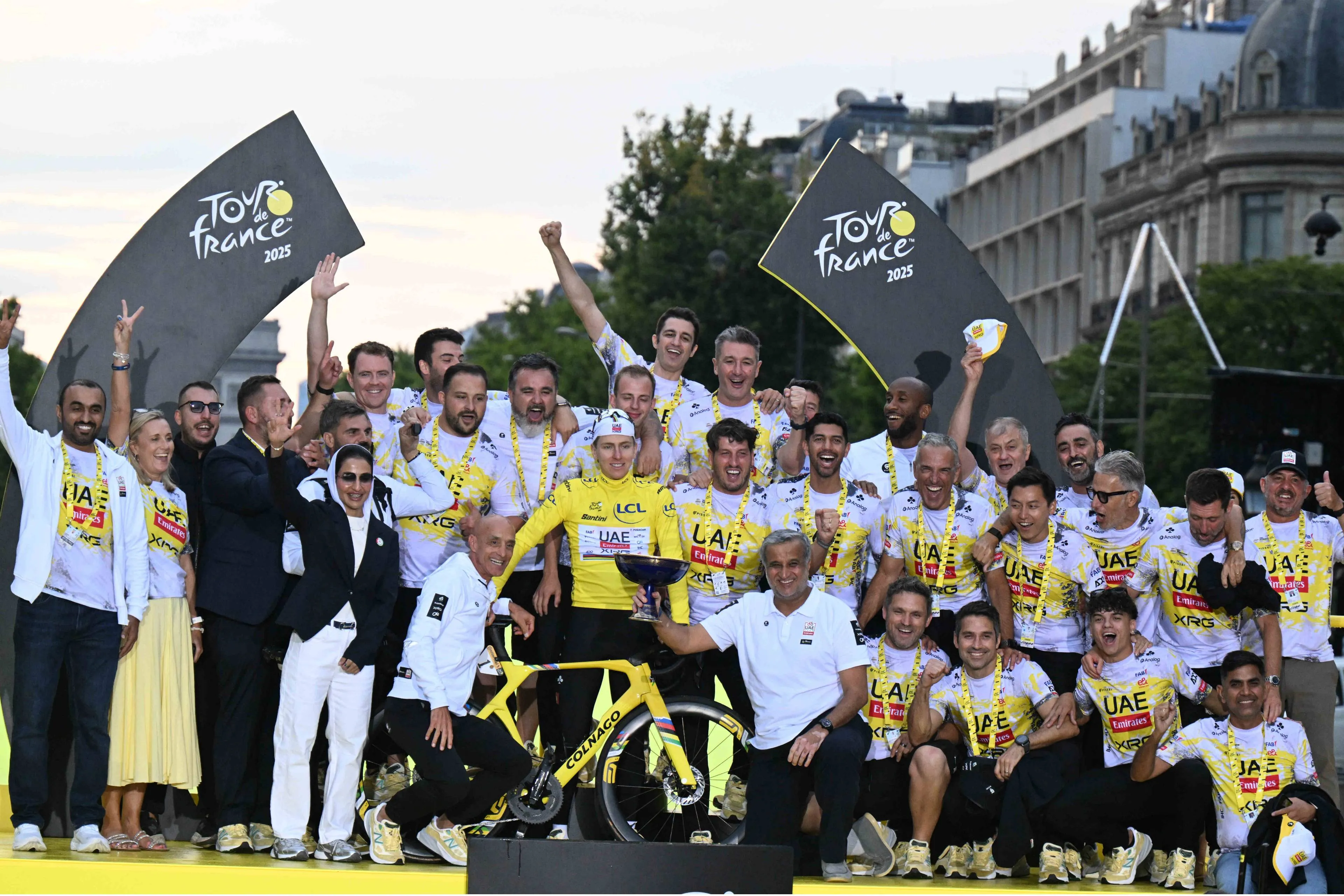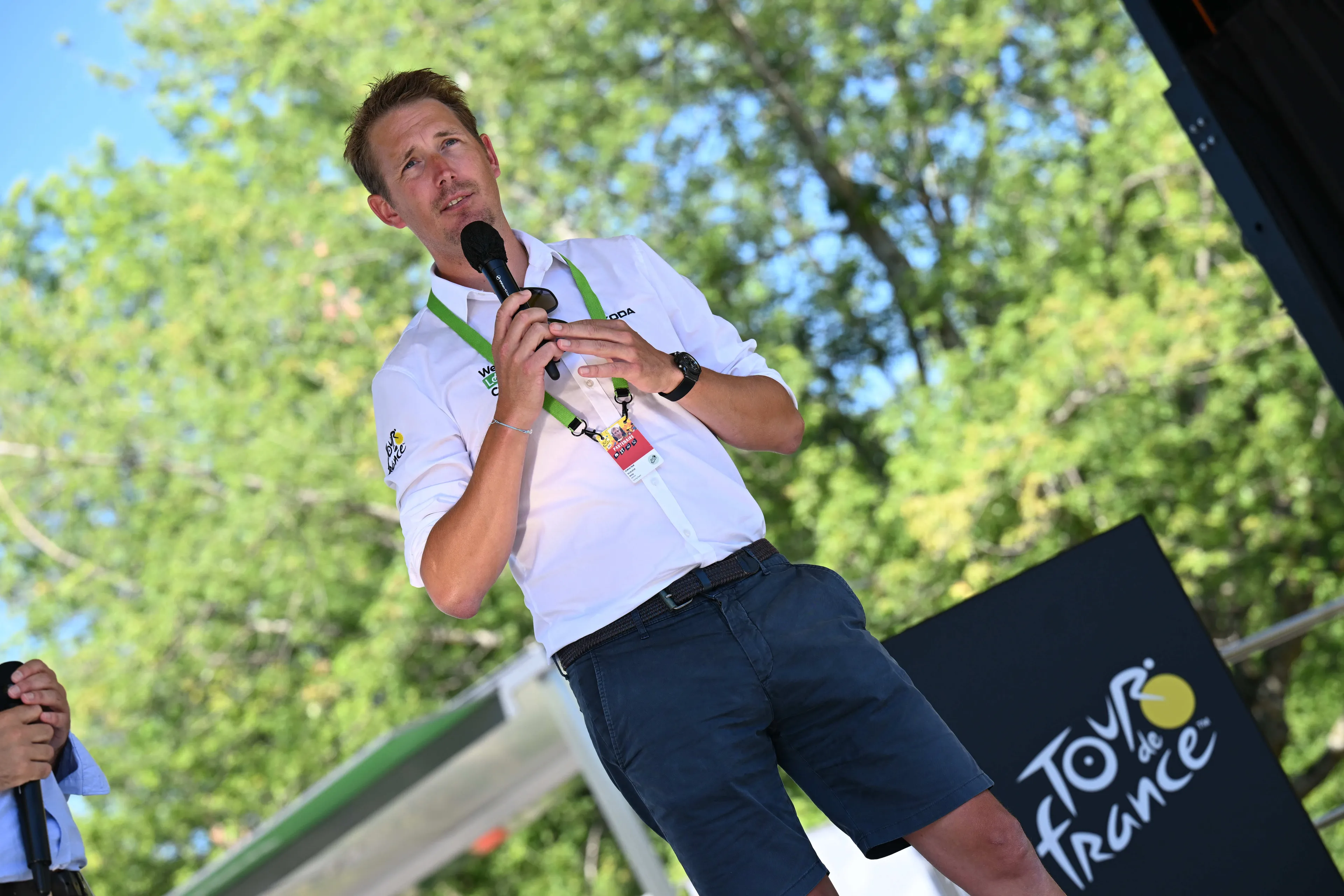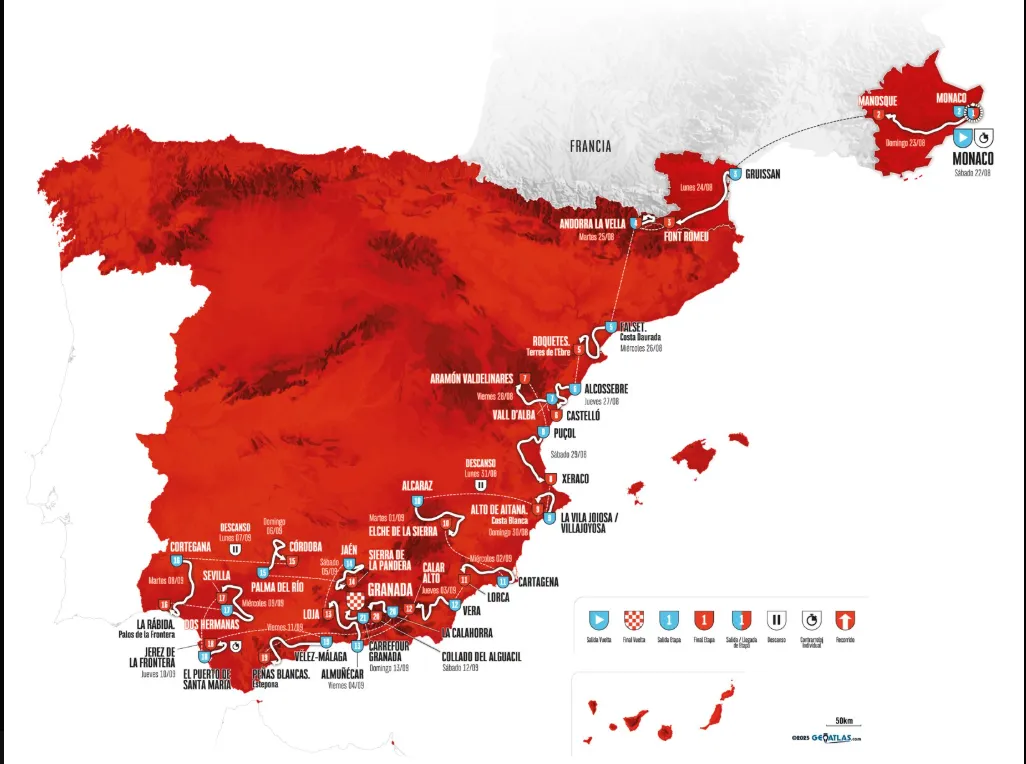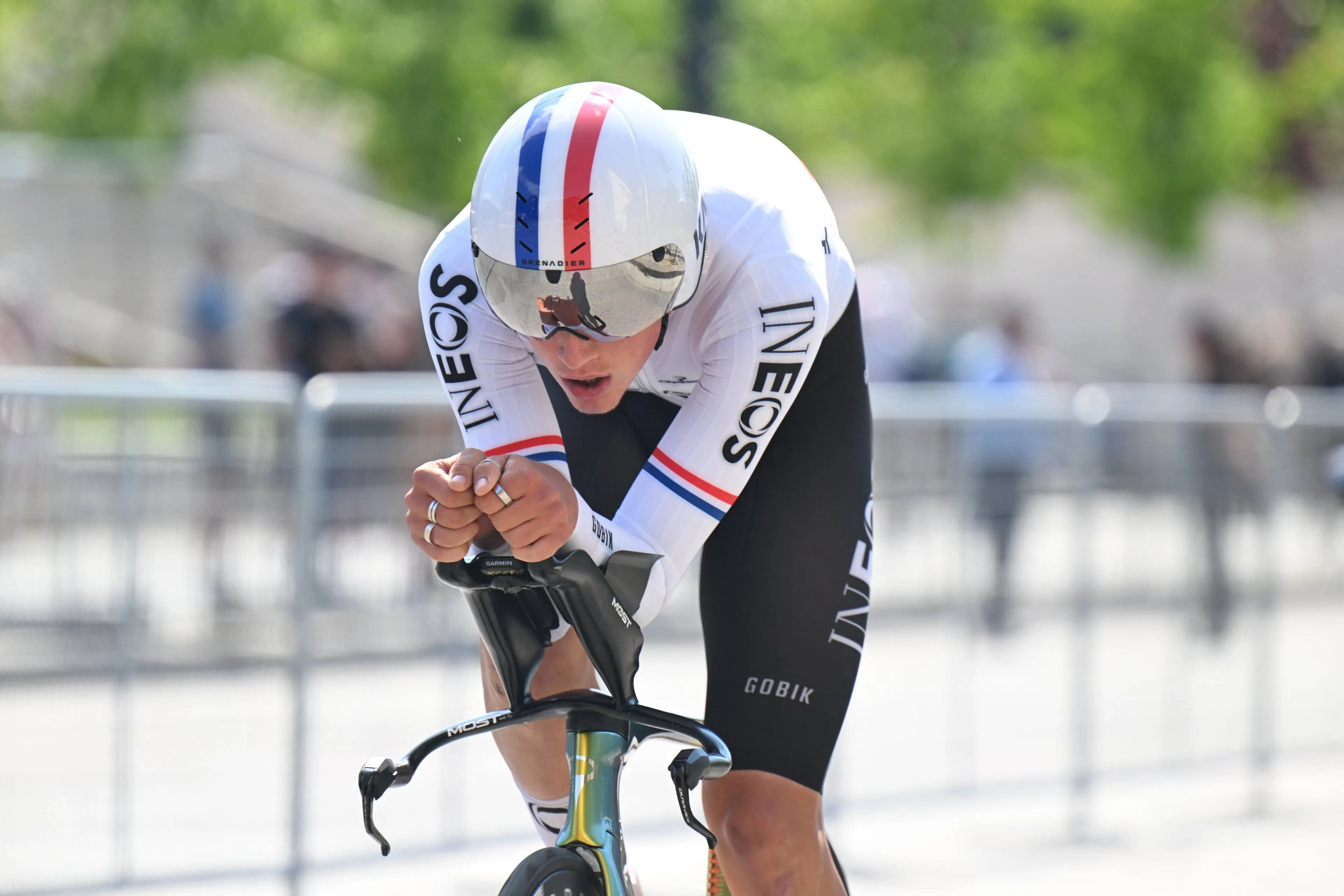Jasper Philipsen? Biniam Girmay? Or even Mark Cavendish? The 2025 Tour de France could see a sprinter in yellow
CyclingFriday, 01 November 2024 at 10:15

The 2025 Tour de France promises to be an iconic edition of
cycling’s greatest race. Announced on the 29th of October, the route is set,
and the riders are already analysing its challenges and opportunities. It’s
still a long way off, but we can’t help getting excited for another epic three
weeks in France next summer.
Running from July 5th to 27th, next year’s Tour will cover
21 stages, beginning in the Hauts-de-France region and covering only French
territory, a decision reflecting a “homecoming” for the race, as race director
Christian Prudhomme said, "We decided to bring the Tour home, it was high
time after all the foreign starts." For sprinters, the profile brings
something particularly special, as they have the chance to don the iconic
yellow jersey as the first stage seems perfect for the fast men
Stage 1: A chance for the sprinters in Lille
Stage one of this year's race, a 185km flat route, offers a super
opportunity for sprinters. Jasper Philipsen, the 2023 green jersey winner, has
already expressed his excitement, declaring it a “big goal” to aim for both the
stage win and the yellow jersey. “This can be a Tour de France that offers
perspective for our team," Philipsen noted in a press release.
For the Belgian sprinter, securing the yellow jersey would
not only be a career highlight but also an achievement that aligns him with the
other legendary sprinters who have managed to claim it on flat terrain.
The yellow jersey is typically governed in a strong hold by
GC men, and usually only time trial specialists or the classics men are able to
snatch it away from them. In fact, this year, Tadej Pogacar wore the leader’s
jersey for an incredible 19 out of 21 stages. However, a few sprinters have had
the unique privilege of wearing it, showcasing the incredible breadth of talent
and strategy required to excel in the Tour. In cycling history, seeing a
sprinter in the yellow jersey remains a special sight, as it brings a new
dimension to the race’s early stages, setting a powerful, fast-paced tone right
from the start.
Cavendish’s yellow victory
Among the select sprinters to wear the yellow jersey is Mark
Cavendish, often considered the greatest sprinter in the sport’s history. On
the first stage of the 2016 Tour de France, Cavendish clinched victory over
formidable competitors like Marcel Kittel and Peter Sagan to don the yellow
jersey, marking his 27th stage win. The victory, won near Utah Beach, Normandy,
was filled with symbolic resonance, as it was one of the famous beaches from D-day
in 1944. Cavendish held the jersey briefly, surrendering it to Sagan on stage
two, but it cemented his place in cycling lore.
Although Cavendish announced his retirement in 2023, he
returned to the peloton in 2024 and captured his record-breaking 35th stage win
at the Tour. At 39, his future is uncertain, as the 2025 season could see him
return once more, or transition into a role off the bike. When asked about his
plans, he hinted at the ambiguity, noting, “Yeah, we’ll see.” If Cavendish
competes in 2025, stage one in Lille could offer a final, legendary shot at
yellow.
Many assumed that Cavendish would step off the bike after
achieving the record, as it seemed to be a perfect ending for his incredible
career. However, with the sheer number of flat stages at next year’s Tour, as
well as his habit of making retirement U-turns, it would not be a surprise if
Cavendish decided to push back his retirement yet another season.
The magic of the yellow jersey
The yellow jersey is
among the most iconic symbols in sports, embodying the essence of the Tour de
France. Introduced in 1919, the jersey symbolises not only victory but also a
relentless spirit of endurance. To wear it is to join a legacy of cycling’s
greatest athletes, from Eddy Merckx to Bernard Hinault, who set benchmarks
across the years. For a sprinter, even one day in yellow is a rare distinction,
adding a layer of personal achievement within the broader team and GC battles.
And as such, you can expect the planet’s quickest cyclists
to all be vying for victory in what could be a once in a career opportunity.
Who could follow in Cavendish’s footsteps?
As Jasper Philipsen acknowledged, the first week of the 2025
Tour is rich with opportunities for sprinters. Philipsen himself will be a
favourite, but he won’t be alone. Biniam Girmay, the 2024 green jersey winner,
has quickly risen as a prominent name. Girmay made history as the first African
to win a Tour de France stage and to claim any classification jersey. His
success has brought fresh perspectives to the sport, and as he lines up in
Lille, the 24-year-old Eritrean will aim to turn this opportunity into a
memorable debut in yellow, which would make yet more history for his nation.
Wout van Aert is another contender, and the Belgian has the
skills and versatility to take the yellow jersey as well. He wore it in 2022, which
is actually the last year the 30 year old clinched a stage victory, displaying
his ability across various terrains. Van Aert’s sheer versatility makes him a
threat not only on flat and hilly stages but even in mountain stages. For him,
stage one could present another chance to showcase his unique all-rounder
profile, and he will be desperate to pick up another Tour stage win.
Jonathan Milan, another name frequently mentioned as a
potential Tour debutant in 2025, could also be a dark horse for the yellow
jersey. Milan has claimed the green jersey at the Giro d'Italia in both 2023
and 2024, and a chance to wear yellow would be a fitting continuation of his
rising career. His ability to handle sprints with consistency and power places
him alongside Philipsen and Girmay as a legitimate contender for stage one. Many
riders in the peloton will be hoping the Lidl-Trek man does not show up in
France next year, as he would be a serious threat.
Over the years, only
a few sprinters have had the honour of wearing the yellow jersey. For instance,
sprinters like the legendary André Darrigade and Thor Hushovd have donned it,
capitalising on early stages that suited their strengths. However, holding onto
it is a different challenge, usually, the yellow jersey shifts to a GC rider as
the race enters hillier stages. For a sprinter, the jersey is a fleeting but
extraordinary prize, a moment of triumph that resonates long after the stage
has ended.
Who will secure yellow next year?
With the unique configuration of the 2025 Tour de France
route, the possibility of seeing a sprinter wear yellow is tantalisingly real.
For riders like Philipsen, Girmay, Van Aert, and perhaps even Cavendish, stage
one provides a career-defining chance to make history. The yellow jersey, an
emblem of cycling’s highest honour, holds a special allure for sprinters, a
fleeting reward but one that stamps their names into the annals of the sport.
As the peloton rolls out in Lille, all eyes will be on who might capture that
golden prize and for how long they can hold onto it. Bring on Lille.
claps 0visitors 0
Just in
Popular news
Latest comments
- I dont know about winning but he has certainly shown that he can lose one.abstractengineer19-12-2025
- Unfair points system!!!. Its the same system under which Virenque won 7 polka dots. But then he cheats so how can he call it unfair.abstractengineer19-12-2025
- Yes being favorites, being 3 to 1 and not winning is worst, 2nd time in history, both times Belgiansabstractengineer19-12-2025
- Uijtdebroeks is just a malcontent. he has never won anything. he will do nothing with Movistar. I would let Remco go for 7 million too. he's great, but not worth it. pay 10 million for Ayuso? also nuts.mij19-12-2025
- interesting Mads got 2nd at Flanders, and he isn't even mentioned by Wout LOL. makes me laugh how he is so overlooked.mij19-12-2025
- I think a 3 v 1 finish with the 1 being a good rider, but not great, is close to humiliation.mij19-12-2025
- These whiners simply want to keep their hold in the highest echelons of the sport without having to perform well enough to please their sponsors and remain there. Cycling has been "unsustainable" ...for 130 years! If Vaughters wants to leave the sport, there will be hundreds of teams happy to ride the Tour and the biggest races in the world in his place. That's what happens when there's a ton of supply of teams and a limited amount of demand for teams at the highest level! -An Economistacem8219-12-2025
- If she was Dutch or Belgian she'd have already sorted a team out. Unfortunately, the CX teams are pretty insular to 'foreigners' and would rather give a spot to a local rider. And that is one reason why the sport is niche outside its heartland.wipperman9519-12-2025
- Dear Editor: It is no humiliation to make the final, even with two riders, and not get it perfect against another talented rider. Disappointment, sure.itsent18-12-2025
- I luv this guy ,so honest puts the hand up ..."my fault.".. I would be stoked to see him win his big monuments ... i think he would be a great team mate and friend.Davide18-12-2025
Loading
Write a comment
